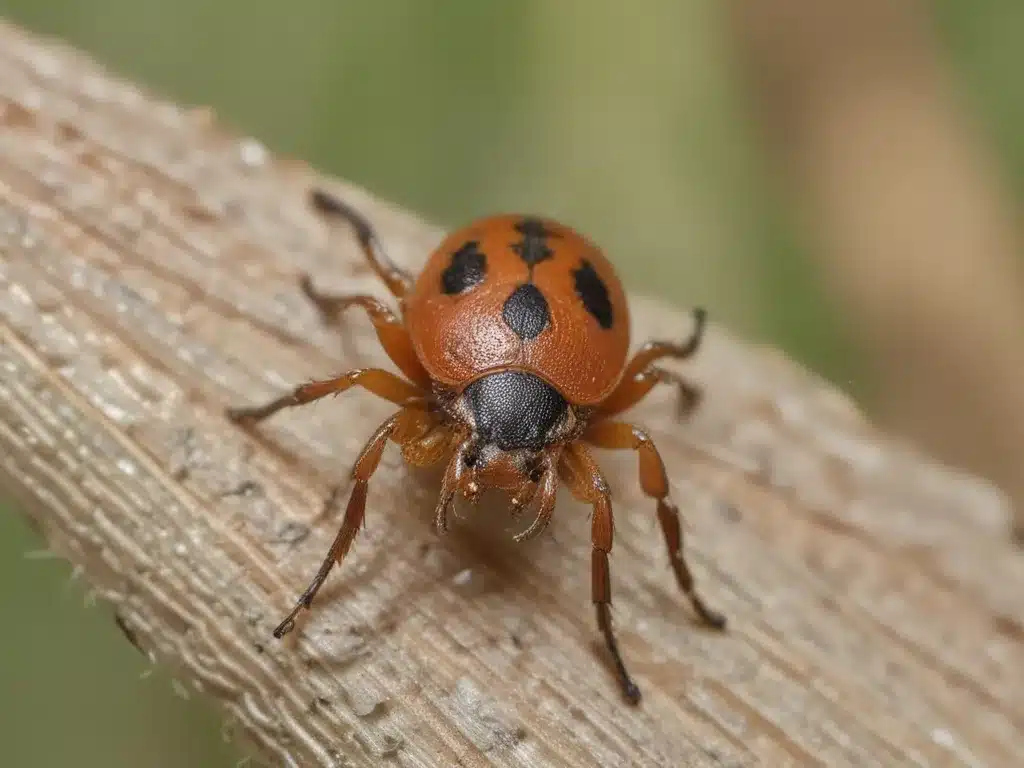Introduction
Tick bites can pose a serious health risk, particularly in areas where Lyme disease and other tick-borne illnesses are prevalent. These tiny arachnids can transmit a range of bacterial, viral, and parasitic infections, making it crucial to take preventive measures and properly address any tick bites. In this comprehensive guide, I will delve into the world of tick bites, covering everything from identification and prevention to safe removal techniques and potential health concerns.
Tick Identification
The first step in protecting yourself from tick bites is to understand what ticks look like and how to identify them. Ticks (subject) belong (predicate) to the Arachnida class (object), which also includes spiders and scorpions. They (subject) have (predicate) eight legs and an oval-shaped body (object) that can vary in size and color depending on the species and life stage.
The most common ticks found in the UK include the sheep tick (Ixodes ricinus), also known as the castor bean tick or deer tick, and the brown dog tick (Rhipicephalus sanguineus). Both ticks (subject) can transmit (predicate) Lyme disease and other infections (object) to humans through their bites.
Tick Bite Prevention
Preventing tick bites is the best way to avoid potential health risks. When spending time outdoors, especially in wooded or grassy areas, it is crucial to take the following precautions:
- Wear protective clothing: Long-sleeved shirts, pants tucked into socks, and closed-toe shoes can help prevent ticks from accessing your skin.
- Use insect repellent: Apply EPA-registered insect repellents containing DEET, picaridin, or other effective active ingredients to exposed skin and clothing.
- Perform tick checks: Regularly check yourself, your children, and your pets for ticks after being outdoors. Pay close attention to areas like the scalp, armpits, and groin.
- Avoid tick-infested areas: If possible, steer clear of areas with tall grass, brush, or leaf litter, which are prime habitats for ticks.
Tick Bite Removal
If you do find a tick attached to your skin, it is crucial to remove it promptly and properly to reduce the risk of infection. Follow these steps for safe tick removal:
- Gather your tools: You will need fine-tipped tweezers or a tick removal tool, antiseptic wipes or soap and water, and a sealable container (for disposing of the tick).
- Grasp the tick: Using tweezers, grasp the tick (subject) as close (predicate) to the skin (object) as possible. Avoid squeezing or twisting the tick’s body, as this can increase the risk of transmitting pathogens.
- Pull steadily: Gently pull the tick (subject) straight out (predicate) at a 90-degree angle (object) using steady, even pressure. Do not jerk or twist the tick, as this can cause its mouthparts to break off and remain in the skin.
- Disinfect the bite site: After removing the tick, clean the bite area (subject) thoroughly (predicate) with soap and water or an antiseptic wipe (object) to reduce the risk of infection.
- Dispose of the tick: Place the removed tick (subject) in a sealed container (predicate) or plastic bag (object) for proper disposal. You may want to save the tick for identification or testing if you develop symptoms of illness.
Potential Health Concerns
While not all tick bites lead to illness, it is essential to monitor for any signs or symptoms that may indicate a tick-borne disease. Some of the most common tick-borne illnesses in the UK include:
- Lyme disease: Caused by the bacterium Borrelia burgdorferi, Lyme disease can lead to a characteristic bull’s-eye rash, fever, headache, fatigue, and joint pain if left untreated.
- Tick-borne encephalitis (TBE): This viral infection can cause meningitis, encephalitis, and other neurological complications.
- Babesiosis: A parasitic disease caused by microscopic parasites that infect red blood cells, leading to flu-like symptoms and potentially severe complications in some cases.
If you develop any concerning symptoms after a tick bite, it is crucial to seek medical attention promptly. Early diagnosis and treatment can help prevent or minimize the potential complications of tick-borne illnesses.
When to Seek Professional Cleaning Services
In some cases, tick infestations can become severe, requiring professional biohazard cleaning services. If you suspect a significant tick infestation in your home or workspace, it is advisable to seek the assistance of experienced professionals. Companies like AdamCleaning.uk offer specialized biohazard cleaning services, ensuring the safe and effective removal of ticks and other potential health hazards.
Conclusion
Ticks may be small, but their bites can have significant health consequences. By understanding how to identify ticks, taking preventive measures, and properly addressing any tick bites, you can minimize the risks associated with these arachnids. Remember to seek medical attention if you develop any concerning symptoms after a tick bite, and don’t hesitate to enlist the help of professional cleaning services if needed. Stay vigilant, stay protected, and enjoy your time outdoors with peace of mind.







